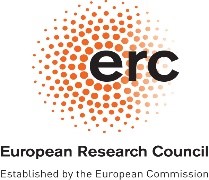Received:
2019-05-10 | Accepted:
2019-06-24 | Published:
2019-09-30
Title
District heating networks: enhancement of the efficiency
Abstract
During the decades the district heating's (DH) advantages (more cost-efficient heat generation and reduced air pollution) overcompensated the additional costs of transmission and distribution of the centrally produced thermal energy to consumers. Rapid increase in the efficiency of low-power heaters, development of separated low heat density areas in cities reduce the competitiveness of the large centralized DH systems in comparison with the distributed cluster-size networks and even local heating. Reduction of transmission costs, enhancement of the network efficiency by optimization of the design of the DH networks become a critical issue. The methodology for determination of the key drivers of the cost-efficiency of the DH networks to implement the most efficient (cost-minimal) thermal energy transmission was developed in this study. An inductive benchmarking modelling was applied; the general causal regularity is based on the observations of specific cases, thus determining the relationships between the network's design and thermal indicators as predictors and transmission costs as the target variable. The key drivers of the network efficiency were disclosed – the network length and the largest inner diameter of the pipes. The methodology is applicable for use by municipalities and heat providers for the heating planning of the new housing developments as well as renovation and/or expansion of the existing DH networks.
Keywords
district heating, network design, data mining, benchmarking methodologies
JEL classifications
C24
, C45
, O13
URI
http://jssidoi.org/ird/article/15
DOI
HAL
Pages
200-213
Funding
The study has been supported by the State Research Program (VPP) project "Development of heat supply and cooling systems in Latvia" (project No. VPP-EM-EE-2018/1-0002), and by the University of Latvia project AAP2016/B032 "Innovative information technologies". The authors would like to thank members of the Latvian Association of Heat Companies for sharing actual data.
This is an open access issue and all published articles are licensed under a
Creative Commons Attribution 4.0 International License
References
Aberg, M., Falting, L., & Forssell, A. 2016. Is Swedish district heating operating on an integrated market? – Differences in pricing, price convergence, and marketing strategy between public and private district heating companies, Energy Policy 90: 222-232. https://doi.org/10.1016/j.enpol.2015.12.030
Search via ReFindit
Briedis, K. M., & Freivalds, K. 2018. On-line Television Stream Classification by Genre, Baltic Journal of Modern Computing, 6(3): 235-246. https://doi.org/10.22364/bjmc.2018.6.3.02
Search via ReFindit
Butler, K., Gordon, R., Roggeveen, K., Waitt, G., & Cooper, P. 2016. Social marketing and value in behavior; Perceived value of using energy efficiently among low income older citizens, Journal of Social Marketing, 6(2): 144-168. https://doi.org/10.1108/JSOCM-07-2015-0045
Search via ReFindit
Daranda, A. 2016. Neural Network Approach to Predict Marine Traffic, Baltic Journal of Modern Computing, 4(3): 483-495.
Search via ReFindit
DEA 2016a. Technology Data for Energy Plants for Electricity and District heating generation. Danish Energy Agency. Retrieved from: https://ens.dk/sites/ens.dk/files/Analyser/technology_data_catalogue_for_el_and_dh_-_aug_2016_upd_oct18.pdf
Search via ReFindit
DEA 2016b. Technology Data for Individual Heating Installations. Danish Energy Agency. Retrieved from: https://ens.dk/sites/ens.dk/files/Analyser/technology_data_catalogue_for_heating_installations_-_marts_2018.pdf
Search via ReFindit
Delangle, A., Lambert, R. S. C., Shah, N., Acha, S., & Markides, C. N. 2017. Modelling and optimising the marginal expansion of an existing district heating network, Energy, 140: 209-223. http://dx.doi.org/10.1016/j.energy.2017.08.066
Search via ReFindit
ETSAP 2013. District heating (2013, January). Retrieved from: https://iea-etsap.org/E-TechDS/PDF/E16_DistrHeat_EA_Final_Jan2013_GSOK.pdf
Search via ReFindit
Euroheat & Power 2019. District Energy in the United Kingdom. Retrieved from: https://www.euroheat.org/knowledge-hub/district-energy-united-kingdom/
Search via ReFindit
Eurostat 2018. Energy Balance Sheets, 2018 Edition. Retrieved from: https://ec.europa.eu/eurostat/web/products-statistical-books/-/KS-EN-18-001
Search via ReFindit
Fakhri, A. S., Ahlgren, E. O., & Ekvall, T. 2016. Modelling economically optimal heat supply to low energy building areas – the importance of scales. Retrieved from: https://www.slideshare.net/IEA-ETSAP/modelling-economically-optimal-heat-supply-to-low-energy-building-areas-the-importance-of-scales
Search via ReFindit
Jan, H., & Ali, A. 2018. Classification of Latent Fingerprints Using Neural Networks, Baltic Journal of Modern Computing, 6(1): 31-44. https://doi.org/10.22364/bjmc.2018.6.1.03
Search via ReFindit
Karnitis, E., Karnitis, G., Zuters, J., & Bobinaite, V. 2017. Modelling of water supply costs, Procedia Computer Science, 104: 3-11. . https://doi.org/10.1016/j.procs.2017.01.040
Search via ReFindit
King, M., & Shaw, R. 2010. Community Energy: planning, Development and Delivery. Retrieved from: https://www.theade.co.uk/assets/docs/resources/CommunityEnergy-PlanningDevelopmentDelivery.pdf
Search via ReFindit
Lund, H., Werner, S., Wiltshire, R., Svendsen, S., Thorsen, J. E., Hvelplund, F., & Mathiesen, B. V. 2014. 4th Generation District Heating (4GDH); integrating smart thermal grids into future sustainable energy systems, Energy, 68: 1-11. https://doi.org/10.1016/j.energy.2014.02.089
Search via ReFindit
Moriarty, J. P. 2011. A Theory of Benchmarking, Benchmarking: An International Journal, 18(4): 588-611. https://doi.org/10.1108/14635771111147650
Search via ReFindit
Persson, U., & Werner, S. 2011. Heat distribution and the future competitiveness of district heating, Applied Energy, 88(3): 568-576. https://doi.org/10.1016/j.apenergy.2010.09.020
Search via ReFindit
Pusat, S., & Erdem, H. E. 2014. Techno-economic model for district heating systems, Energy and Buildings, 72: 177-185. https://doi.org/10.1016/j.enbuild.2013.12.051
Search via ReFindit
RS 2018. Annual Reports 2017, Rigas Siltums AS. Retrieved from: http://www.rs.lv/en/content/annual-report
Search via ReFindit
Saeima, 1994. Law “On Local Governments”. Retrieved from: https://likumi.lv/ta/en/en/id/57255-on-local-governments
Search via ReFindit
Sarma, U., & Bazbauers, G. 2017. District heating tariff component analysis for tariff benchmarking model. Energy Procedia, 113: 104-110. https://doi.org/10.1016/j.egypro.2017.04.029
Search via ReFindit
Sayegh, M. A., Danielewicz, J., Nannou, T., Miniewicz, M., Jadviszczak, P., Piekarska, K., & Jouhara, H. 2017. Trends of European research and development in district heating technologies, Renewable and Sustainable Energy Reviews, 68: 1183-1192. https://doi.org/10.1016/j.rser.2016.02.023
Search via ReFindit
Smaliukiene, R., Monni, S. 2019. A Step-by-step Approach to Social marketing in Energy Transition. Insights into Regional Development, 1(1): 19-32. https://doi.org/10.9770/ird.2019.1.1(2)
Search via ReFindit
Song, J., Li, H., & Wallin, F. 2017. Cost comparison between district heating and alternatives during the price model restructuring process. Energy Procedia, 105: 3922 – 3927. https://doi.org/10.1016/j.egypro.2017.03.813
Search via ReFindit
UN 2017. New Urban Agenda. Retrieved from: http://habitat3.org/wp-content/uploads/NUA-English.pdf
Search via ReFindit
UNEP 2015. District Energy in Cities; Unlocking the Potential of Energy Efficiency and renewable Energy. Retrieved from: http://wedocs.unep.org/handle/20.500.11822/9317
Search via ReFindit
Werner, S. 2017. International review of district heating and cooling, Energy, 137: 617-631. https://doi.org/10.1016/j.energy.2017.04.045
Search via ReFindit
Zuters, J., Valainis, J., Karnitis, G., & Karnitis, E. 2016. Modelling of adequate costs of utilities services. In: G. Dregvaite, R. Damasevicius (Eds.), Communications in Computer and Information Science, 639, (pp. 3-17). Basel, Springer. https://doi.org/10.1007/978-3-319-46254-7_1
Search via ReFindit












 RSS 1.0
RSS 1.0